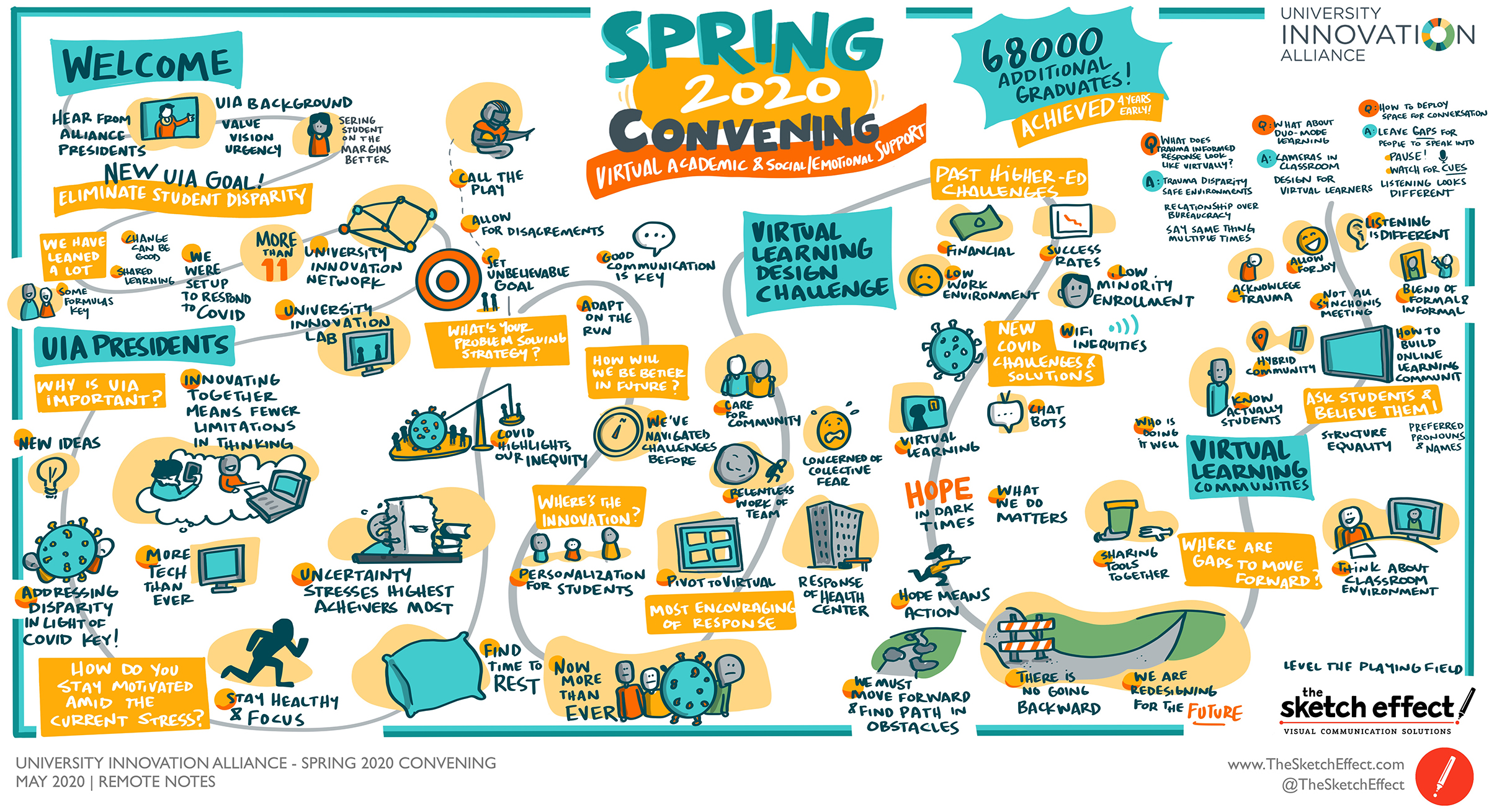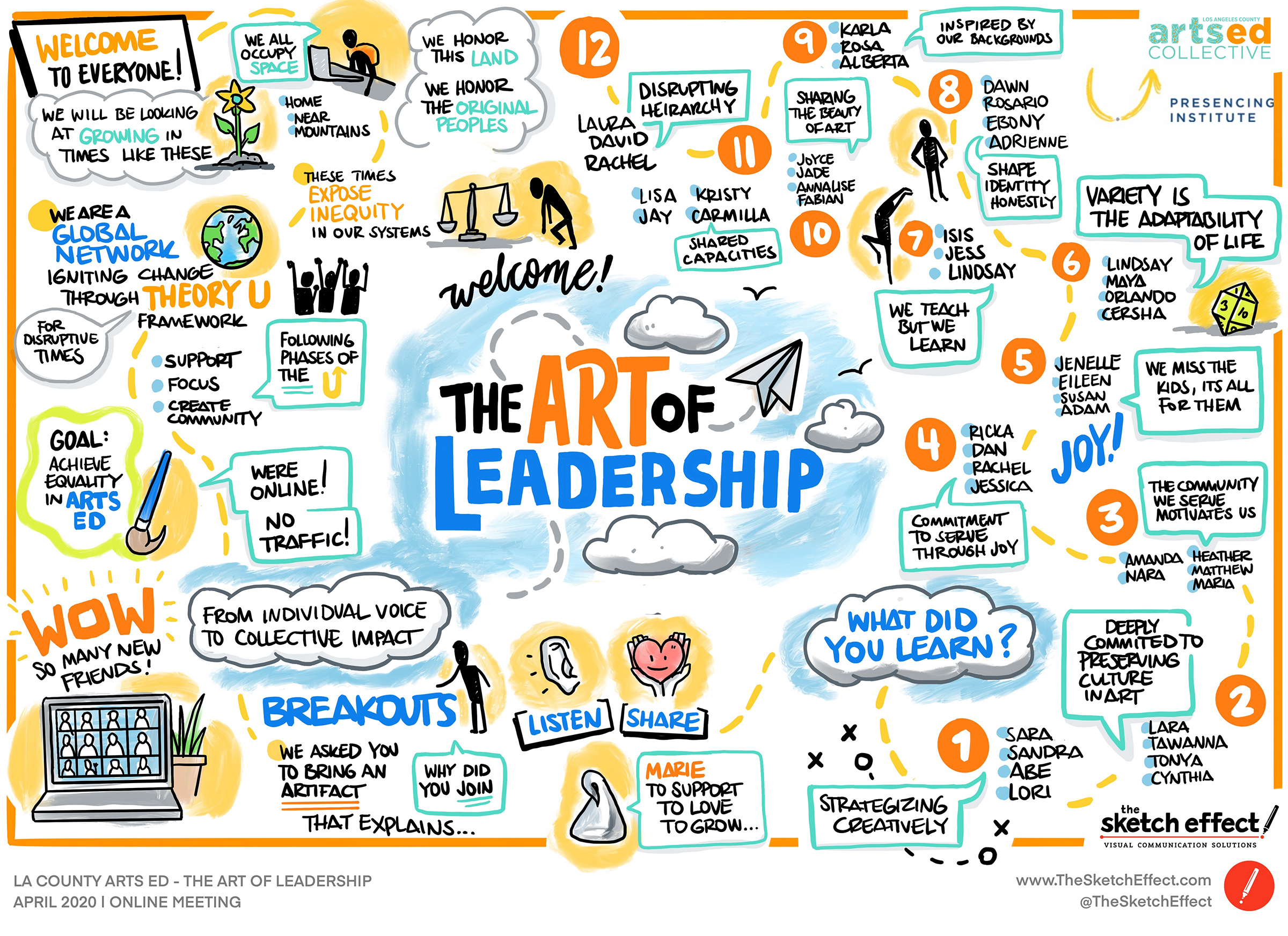Break out of the gray boxes at your next virtual or hybrid meeting by bringing in illustrators who can add color and capture the reason for the Zoom. Visual artists have long been popular at conferences and brainstorming sessions. They put marker to posterboard to document presentations and conversations in real time.
Now, meeting planners are calling on these same active listeners to capture the information shared through the computer and deliver a PDF that will be much more memorable than a PowerPoint slide deck.
Smart Meetings asked animating professionals for tips on how best to make use of a graphic recorder in the era of COVID.
Activate the Cool Factor

William Warren, founder and CEO of Atlanta-based The Sketch Effect, and his North American team had been drawing their way through keynote speeches for seven years. Then, in March, in-person meetings were suddenly shelved, and he found himself looking for ways to survive. He quickly found a market for virtual sketching—and even discovered it had its upsides.
For one, he has been able to staff projects with as little as two days’ notice. “That is not ideal,” he admits, but without the need to book flights or hotel rooms, he can squeeze in a tech run-through to familiarize the artist with the content and the team, and to ensure that all equipment is working well.
And he has discovered there is real need for his services. Meeting planners and their attendees are hungry for something to break up the monotony of looking at their own faces all day. “The service we provide makes a virtual meeting not lame,” as he puts it.
Especially now that the novelty of virtual meetings has worn off, organizers need to keep people from being distracted, or even clicking away to shinier things. Watching a drawing come to life in front of their eyes based on what is being discussed is hard to look away from—thus enhancing attention and engagement.
“It also increases alignment, so everyone is on the same page,” he says. That was difficult enough when everyone was gathered around the conference room table, and it’s even more challenging now when there is a screen dividing participants.
At the same time, a colorful PDF or time-lapse capture of the program gives everyone something to refer back to later. One of Warren’s clients mandated that everyone make the drawing a screensaver; another printed it supersized and plastered it on the wall.
Digital visual notes remove boundaries—geographic and psychological. Chicago-based Ink Factory was already working with clients all over the world, including Walmart and Unilever, before the pandemic. Now it is giving distributed team members the benefit of eye-catching tools that stimulate the emotional centers of their brains, streamline the recall function and are widely accessible.
Multi-sensory Appeal

Whenever big ideas are on the agenda, a graphic recorder can help more people participate fully. In 2019, PCMA EduCon in Los Angeles brought in Michelle Boos-Stone of Five Elements Consulting Group. For the visual learners in the audience, it made the content easier to absorb. But even those who process information primarily through other senses (auditory, kinesthetic) benefitted—when walking down the hall between sessions, they couldn’t help but notice the bright, flowing words and pictures on the walls that captured the session they had been in earlier in the morning. Smiles of recognition were often accompanied by lots of mobile snaps to share back at the office.
Goal Setting
Drawing doesn’t have to be a spectator sport. Patti Dobrowolski, principal of Up Your Creative Genius, is a speaker and coach who uses art to help people better understand what they want. In a recent Zoom session called “Drawing Solutions: How Visual Goal Setting Will Change Your Life,” she walked participants of The Eventprofs Book Club through the process of dreaming big by drawing their own powerful pictures.
She stresses that the exercise is not just for natural artists. “ You will be amazed, whether you can draw or not—30 days from now—how much you get done when you have a proven process for drawing the desired reality of your business,” she says.
Her secret? Overriding that inner critic and looking at goals with a fresh perspective.




